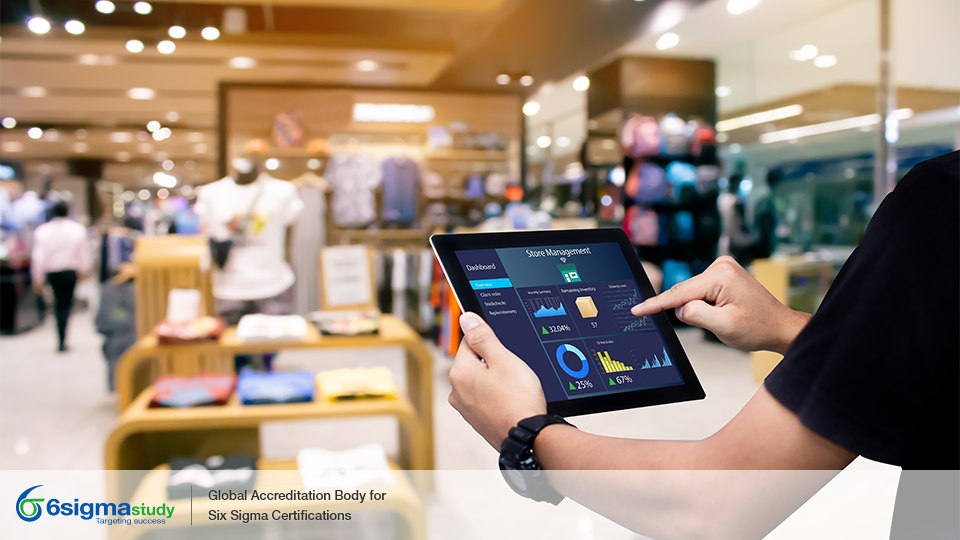Retail Efficiency & Satisfaction with Six Sigma and Lean
Posted by 6sigmastudy® on May 03, 2024 | Six Sigma Methodology
Keywords: Six Sigma 6sigmastudy Retail Efficiency Six Sigma Yellow Belt (SSYB™) Six Sigma Green Belt (SSGB™) Six Sigma Black Belt (SSBB™) Lean Six Sigma Green Belt (LSSGB™) Lean Six Sigma Black Belt (LSSBB™) Free Articles Free Six Sigma Articles TQM Six sigma define dmaic dmadv
In today's tough retail world, being efficient and making customers happy are key to doing well. While Six Sigma and Lean methods were originally for making things in factories, now they're helping stores too. They're great for making operations smoother and making sure customers have a good time shopping. Stores use these methods to find ways to work better and give customers what they want. By using Six Sigma and Lean, retailers can make their stores run more smoothly and keep shoppers satisfied, which is really important for success in today's competitive retail market.
Running a retail store involves many tasks, like managing inventory and handling checkouts. These tasks can be made better using Six Sigma and Lean methods. These methods help find and fix things that are not working well and make workflows smoother. When retailers use Six Sigma and Lean, they can make their store run more efficiently. This means things get done faster and customers are happier because they don't have to wait as long or deal with problems. So, by using these methods, retailers can make sure their store works well and keeps customers satisfied, which is really important for success in retail.
The checkout is super important in retail because it affects how happy customers are. Stores use Lean tools like Value Stream Mapping to see where things might be slow or not working well during checkout. This helps them fix any problems and make sure customers have a quick and smooth experience. Another helpful tool is the Five Whys, which helps stores figure out why something went wrong. By asking "why" five times, they can get to the root cause of a problem and fix it properly. So, by using these tools, stores can make sure checkout is fast and easy for customers, which makes them happier and more likely to come back again.
Six Sigma and Lean methods help stores understand and meet what customers want. The Kano Model is a tool that helps stores figure out what customers expect in three main areas: basic stuff they must have, how well products perform, and what makes them excited. By using this model, stores can make sure their products and services match what customers want. This means they can create experiences that go beyond what customers expect, which makes them happy and more likely to keep coming back. So, by using Six Sigma and Lean along with the Kano Model, stores can make sure they're giving customers what they want, which is really important for keeping them satisfied and loyal.
Six Sigma's DMADV method helps stores make new processes or services that fit what customers want. First, they define what they need to do. Then, they measure and analyse how things are going. Next, they design the new process or service to work well. Finally, they check to make sure it works right. This helps stores make sure they're giving customers what they want and still making money. By following these steps, stores can create new ways of doing things that meet customer needs and are efficient. This means they can deliver products and services that customers want, while also staying profitable. So, using Six Sigma's DMADV method helps stores make sure they're meeting customer demands and running their business well.
Lean principles in retail help find and cut waste in different areas, like reducing waiting times and managing inventory better. This makes things run smoother and saves money while still giving customers what they want. Combining Six Sigma and Lean in retail isn't just a one-time thing; it's about always trying to get better. By encouraging innovation and efficiency, stores can adapt to changes in the market and stay successful in the long run. So, using these methods helps stores improve continuously and stay competitive.
Six Sigma and Lean methods are great for making retail stores work better. They help stores do things more efficiently and make customers happier. By using these methods, stores can fix problems, understand what customers want, and give them a great shopping experience. By always trying to get better, stores can make sure they're using Six Sigma and Lean to the fullest and stay successful in today's fast-changing retail world.
For more such interesting articles on Six Sigma and its concepts, please click here

